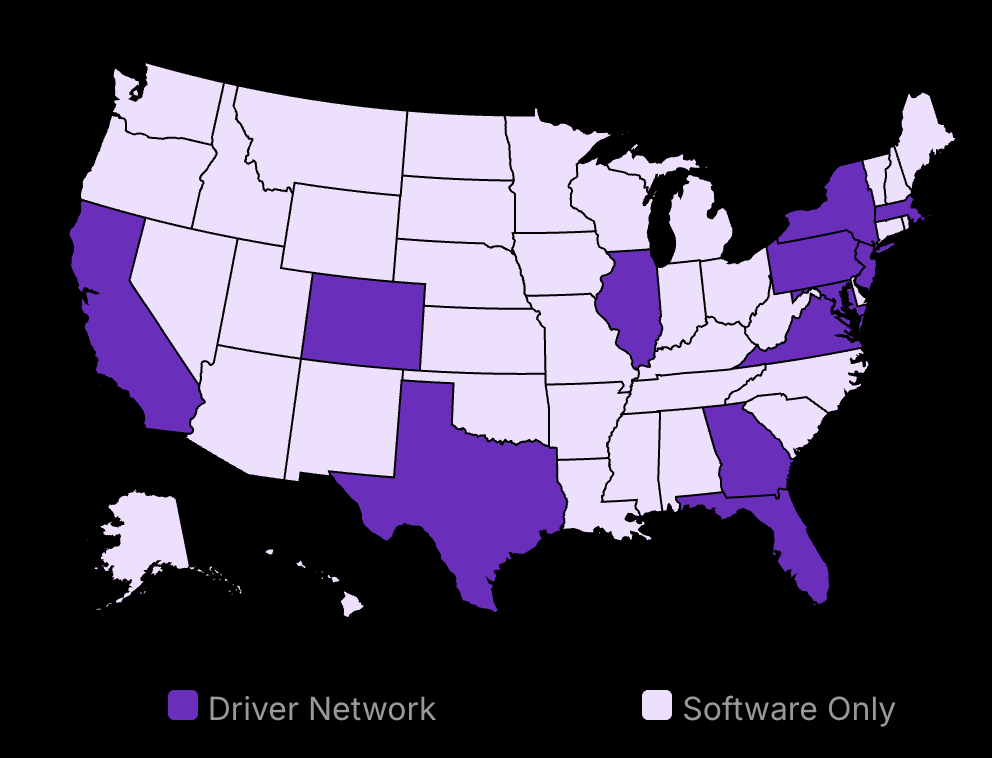“Most retail stores fail not because of their products, but because of their workers.” This hard truth explains why some stores thrive while others with identical inventory struggle. The difference? Effective staff training.
As a retail business owner, you’ve likely experienced the frustration of watching employees fumble through tasks, customer interactions, or miss sales opportunities due to a lack of interpersonal skills. These moments aren’t just awkward—they’re expensive. Each undertrained employee costs you real money every day they work without proper skills.
What if your staff could transform from order-takers into sales-generating, customer-pleasing assets, reaching their full potential? The path exists, but it’s rarely followed correctly.
The pattern is clear: stores that invest in smart, systematic training see dramatic results, often 30% or more in sales increases within months, aligning with current sales trends. Those that don’t remain stuck in cycles of high turnover and missed targets.
The good news? Effective retail staff training doesn’t require massive budgets or complex systems. It needs strategy to develop the necessary skills .
In this guide, we’ll walk through proven retail staff training ideas that deliver actual results for common retail positions. You’ll learn how to identify critical skill gaps, implement targeted training programs, and measure improvements that directly impact your bottom line.
This isn’t about abstract concepts, but rather about building customer loyalty through effective training. You’ll get practical steps you can start implementing tomorrow morning that have helped hundreds of retail businesses transform their teams.

Save 80% of delivery management time
We handle everything:
- Dedicated operations manager
- Real-time tracking dashboard
- Automated customer notifications
- Urgent issue resolution
Step-by-Step Guide to Effective Retail Employee Development
Quality retail training directly links to better sales performance and customer retention.
Effective development programs can reduce staff turnover by up to 40%
Structured training approaches lead to greater employee confidence and consistency
Step 1: Identify Training Needs in the Retail Business
The foundation of any effective retail training program starts with a clear understanding of what skills your employees need. This goes beyond guessing or making assumptions. A systematic approach to identifying gaps ensures that your training efforts address real needs rather than perceived ones, particularly about day-to-day responsibilities.
You can begin with a skills assessment for all retail staff members. This can be as simple as a checklist of required competencies for each position, where managers rate current performance levels. Focus on technical skills (operating POS systems, inventory management), product knowledge, soft skills (customer interaction, problem-solving), and processing purchases effectively. The assessment should identify both individual and team-wide gaps that need addressing.
Next, gather feedback directly from employees. They often have the clearest insight into where they struggle in their daily work. It is better to create anonymous surveys with specific questions about their confidence levels in different aspects of their job. For example: “On a scale of 1-5, how comfortable are you explaining the features of our premium product line to customers?” This direct input helps prioritize training areas that employees themselves recognize as weaknesses, such as how to greet customers effectively.
Types of Retail Skills to Assess
When conducting your assessment, categorize skills into these key areas relevant for floor retail staff :
Technical competencies (POS systems, inventory tools, security protocols)
Product knowledge (features, benefits, competitive advantages)
Customer service (greeting, needs assessment, handling complaints)
Sales techniques (closing, upselling, handling objections)
Operational procedures (opening/closing, cash handling, safety)
Manager observations provide another valuable data source. Have department leaders document specific situations where employee performance could be improved. For instance, if a manager notices that certain retail staff members struggle with handling customer complaints during busy periods, this points to a need for conflict resolution training.
Step 2: Develop a Customized Training Program
With your needs assessment complete, it’s time to build a tailored training program. The key is designing content that addresses specific gaps in retail sales while being engaging and practical for your retail environment.
You can start by defining clear learning objectives for each training module. These should be specific, measurable, and directly connected to job performance across a broad range of skills. For example, rather than a vague goal like “improve product knowledge,” create an objective such as “After training, staff will be able to explain the features and benefits of our top 10 products and recommend appropriate alternatives based on customer needs.”
Choose training methods that match both the content and your staff’s learning preferences. For technical skills, hands-on practice with actual equipment works best. For product knowledge, a combination of visual materials and physical product demonstrations is effective. Consider these delivery formats that can also help save time during the training session :
In-person workshops for skills requiring physical demonstration
E-learning modules for consistent information that can be accessed anytime
Role-playing exercises for customer interaction skills
Shadowing experienced staff for complex operational procedures
Microlearning (short, focused lessons) for reinforcing key concepts
Creating Effective Training Materials
Your training materials should reflect the realities of retail work. Develop content that helps staff build relationships with customers :
Uses actual store scenarios and products
Includes plenty of visual elements (diagrams, photos of products)
Provides clear step-by-step instructions for processes
Incorporates checklists that can be used on the sales floor
Contains practice exercises that mimic real customer interactions
Sequence the training logically, starting with foundational knowledge before advancing to more complex skills. For new hires, begin with company culture and basic operational procedures before moving to product knowledge and sales techniques. For existing staff, focus training modules on specific skill gaps identified in your assessment.
Consider creating different training tracks based on employee experience levels. New hires need comprehensive onboarding, while veteran staff might benefit more from advanced selling techniques or leadership development. This targeted approach prevents boring experienced employees with basics they already know.
Step 3: Implement the Retail Staff Training in the Retail Industry
Execution is where many retail training programs falter, highlighting the need for effective retail staff training. Smart implementation requires careful planning around scheduling, engagement, and application of learning.
Schedule retail staff training sessions during non-peak business hours to minimize disruption. Early mornings before store opening, during naturally slower periods, or after closing can work well. Break longer training into multiple shorter sessions (60-90 minutes) to maintain attention and allow retail employees to process information. For larger teams with few retail employees, consider a rotating schedule where small groups attend training while others maintain store operations.
You can use interactive methods to keep employees engaged. Adult learners retain information better when they’re active participants rather than passive listeners. Incorporate techniques like:
Small group discussions about real customer scenarios
Hands-on practice with products and systems
Mock sales interactions with immediate feedback
Knowledge competitions with small rewards
Peer teaching, where experienced staff share expertise
Making Retail Employees’ Training Stick Through Practice
The gap between learning and application is crucial. You can create opportunities for immediate practice of new skills:
After training on a new product line, have employees practice sales pitches with each other
Following customer service training, role-play difficult customer scenarios
After the POS system training, set up practice stations where employees can process various transaction types
Implement “learning buddies” where employees pair up to observe and provide feedback on new skills
Provide retail job aids that support application on the sales floor for the inventory control specialist. These might include product comparison charts, troubleshooting guides, or customer interaction scripts that retail employees can reference during actual work. These tools bridge the gap between the training room and the sales floor.
Step 4: Evaluate Training Effectiveness in the Retail Sector
Measurement is essential for determining if your training investment is paying off. Without evaluation, you can’t know if employee performance is improving.
Collect feedback from participants immediately after training sessions. Design simple evaluation forms that ask specific questions about the training’s relevance, clarity, and potential usefulness. Include both rating scales and open-ended questions to gather both quantitative and qualitative data. For example: “How confident do you feel applying these skills with customers tomorrow?” followed by “What specific aspects of the training will be most helpful in your daily work?”
Track performance metrics that directly connect to training objectives. If you conducted sales technique training, monitor individual sales conversion rates before and after. For customer service training, review customer satisfaction scores. For operational training, measure error rates or process completion times. The key is identifying metrics that reflect the skills addressed in training.
Continuous Improvement Cycle in Retail Stores
Use evaluation data to refine your training approach:
Analyze feedback patterns to identify strengths and weaknesses in your program
Conduct follow-up observations on the sales floor to see if new skills are being applied
Hold brief refresher sessions on topics where application is lacking
Recognize and reward employees who successfully implement new skills
Adjust future training based on what worked well and what didn’t
Step 5: Reinforce Learning Through Ongoing Support
Training is not a one-time event but an ongoing process. Creating systems for continuous learning and skill reinforcement ensures that initial training investments yield lasting results.
Implement a coaching program where managers provide regular feedback on specific skills. This can be as simple as weekly 10-minute observations followed by constructive feedback. Focus on catching employees doing things right, not just correcting mistakes. For example, when a staff member successfully handles a difficult customer, acknowledge the specific techniques they used effectively.
You can create a knowledge-sharing culture where employees teach each other. Designate “subject matter experts” in different areas who can act as resources for their peers. For example, an employee with exceptional product knowledge might lead short product update sessions when new merchandise arrives.
Digital Tools for Continuous Learning
Leverage technology to support ongoing development:
Use a digital knowledge base where employees can quickly look up product information
Create a private social media group for sharing success stories and tips
Develop short refresher videos accessible via mobile devices
Implement microlearning through daily 5-minute challenges sent via email or app
Use gamification to make continuous learning engaging
Step 6: Link Development to Career Progression
Retail staff are more likely to engage with training when they see a clear connection to their professional growth. Creating visible pathways for advancement motivates employees to actively participate in development activities.
Create a skills matrix that clearly shows what competencies are required for different positions within your organization. This transparent framework helps employees understand what they need to master to advance. For example, a sales associate might see that to become a department lead, they need to demonstrate excellence in inventory management, visual merchandising, and team communication.
Connect training completion to tangible benefits. This could include eligibility for added responsibilities, schedule preferences, or formal advancement opportunities. When employees see direct outcomes from their learning efforts, motivation increases significantly.
Personal Development Plans and Necessary Skills
Work with each employee to create an individual development plan:
Identify their current strengths through performance data and observations
Discuss their career goals within retail (or beyond)
Map out specific skills they need to develop to reach those goals
Create a timeline with clear milestones for skill acquisition
Schedule regular check-ins to review progress and adjust as needed
These personalized plans show employees that you’re invested in their growth, not just immediate job performance. They also help managers prioritize development resources for high-potential team members.
Regular career conversations are essential. Many retail employees leave because they don’t see growth opportunities, not because they dislike the work itself. Quarterly discussions about professional development keep employees engaged and reduce turnover.
Common Retail Training Challenges and Solutions
Even well-designed training programs face obstacles. Anticipating these challenges and having strategies to address them increases your chances of success. An essential tool for overcoming training challenges is effective scheduling. Utilizing reliable retail scheduling software can streamline planning and ensure that training sessions occur during optimal times without disrupting store operations. For those looking to upgrade their scheduling systems, exploring the 7 best retail scheduling software options for 2025 can offer valuable solutions tailored to retail businesses.
Time constraints pose the biggest challenge in busy retail environments. To overcome this, break training into smaller modules that can fit into existing schedules. Consider “micro-training” sessions of 15–20 minutes that can happen during slower periods or just before shifts. Digital learning options that employees can access during commutes or off-hours provide additional flexibility.
As retail consultant Sarah Mitchell puts it, “The key to effective training isn’t more time—it’s smarter use of the time you already have.”
Budget limitations often restrict training resources. Address this by developing internal trainers from your experienced staff. Create a “train-the-trainer” program where high-performing employees learn to effectively teach others. This multiplies your training capacity while also providing development opportunities for these staff members.
Overcoming Resistance to Training
Some employees may resist training efforts. Common reasons include:
Perception that training isn’t relevant to their daily work
Fear of being judged if they struggle with new skills
“Been there, done that” attitude from veteran staff
Concern about additional workload without compensation
Address these concerns directly by:
Communicating how specific training connects to their everyday challenges
Creating a safe learning environment where mistakes are treated as learning opportunities
Involving experienced staff in the design and delivery of training
Recognizing participation and improvement through incentives or recognition
Inconsistent application across different store locations or departments can undermine training effectiveness. Implement standard evaluation criteria and regular cross-location communication to ensure all employees receive similar quality of training and support for implementation.
Enhance Retail Sales with Necessary Skill Improvement Strategies
Training in specific skills directly increases sales performance
Regular practice of techniques creates a confident sales staff
Peer learning accelerates skill development for the entire team
Step 1: Focus on Product Knowledge
Product knowledge forms the foundation of all successful retail selling in the retail sector. When staff thoroughly understand what they’re selling, they can match products to customer needs more effectively and answer questions with confidence. Start by developing a structured approach to product training.
You can begin with a comprehensive product knowledge database accessible to all staff. This should include detailed information about features, benefits, materials, pricing, and comparisons to similar products. For retail environments with numerous products, organize information by categories and prioritize top-selling items or seasonal merchandise for initial focus. Update this resource whenever new products arrive or specifications change.
Schedule regular product knowledge sessions at least twice monthly. These should be brief (15-30 minutes) but focused sessions featuring one product category at a time. For example, a clothing retailer might focus one session entirely on denim products, exploring fabrication differences, fit options, and care instructions. The key is consistency—regular short sessions are more effective than occasional marathon training days.
Creating Engaging Product Learning Experiences
Make product knowledge training interactive rather than lecture-based. Have staff handle products during training and identify key selling points. For example, if training on premium cookware, have staff feel the weight difference between standard and premium pans, test the heat distribution, and explain how these features benefit customers.
Implement product testing programs where possible. Staff who have personally used a product can speak from experience when selling it. Consider implementing a staff discount specifically for products you want them to try, then gather their feedback in training sessions.
Create product knowledge quizzes that staff can complete on their phones or tablets during quiet periods. These micro-learning opportunities reinforce knowledge without requiring scheduled training time. Keep these quizzes brief (5-7 questions) and focused on practical selling information rather than technical specifications that customers rarely ask about.
Using Role-Play to Practice Product Knowledge For Future Customer Satisfaction
Role-playing exercises transform product knowledge from theoretical information into practical selling skills. Set up structured scenarios that reflect common customer interactions, focusing on how to integrate product knowledge naturally into conversations.
Develop a library of role-play scenarios based on common customer questions and objections. For each product category, create 3-5 scenarios that staff can practice. For example:
A customer looking for running shoes who has previously had knee pain
A customer comparing two different tablet models with similar prices
A customer seeking a gift for someone without knowing their exact preferences
Schedule regular role-play sessions where employees can practice these scenarios in pairs. The person playing the customer should be given specific objections or questions to raise during the interaction. After each role-play, allow time for feedback and discussion of what worked well and what could be improved.
Step 2: Teach Advanced Sales Techniques
Once staff have solid product knowledge, they need advanced sales techniques to maximize each customer interaction. These techniques help staff increase transaction values while genuinely helping customers find the best solutions.
Cross-Selling and Upselling Training
Cross-selling and upselling are distinct techniques that staff should understand and practice separately:
Cross-selling training: Teach staff to identify complementary products that enhance the customer’s primary purchase. Start by mapping product relationships throughout your store. For every major product category, identify 2-3 logical add-ons. Create a visual reference guide showing these relationships and the specific benefits of purchasing products together.
Train staff to suggest these relationships using benefit-focused language: “This charger extends your device’s battery life by 50% when traveling” is more effective than “Would you like a charger with that?”
Upselling training: Focus on helping customers understand the additional benefits of premium options. Create comparison charts showing feature differences between standard and premium products in each category. Train staff to ask questions that reveal whether customers would value these additional features.
Developing Situational Awareness
Effective selling requires reading customer signals and adapting accordingly. Train staff to recognize buying signals through both verbal and non-verbal cues:
Verbal buying signals include questions about:
Payment options
Delivery or installation
Compatibility with other products
Guarantees or warranties
Non-verbal buying signals include:
Extended product examination
Discussing the product with companions
Repeatedly returning to the same product
Comparing similar products side-by-side
Implementing Peer Training with Top Performers
Your best-performing sales staff are valuable in-house trainers. Their techniques are proven to work in your specific retail environment. Formalize peer training to spread these skills throughout your team.
Start by identifying your top performers based on both sales data and customer feedback. Look beyond just high sales numbers to find staff who consistently provide excellent customer experiences. These are your potential peer trainers.
Creating a Structured Peer Training Program
Give your peer trainers structure and support rather than simply asking them to “show others how it’s done.” Provide basic training on coaching techniques and create specific observation and feedback tools they can use.
Implement a “shadow shift” program where newer or struggling staff members spend 2-3 hours observing a top performer. Create a structured observation form focusing their attention on specific behaviors to notice:
How the top performer initiates customer interactions
Transition phrases are used to introduce products
Techniques for handling objections
Methods for closing sales naturally
After the shadow shift, schedule a brief discussion session where the observer can ask questions about what they noticed. This reflection solidifies learning and clarifies techniques.
You can create “technique spotlights” where top performers demonstrate a specific selling technique to a small group. For example, a top performer might demonstrate three different ways to introduce cross-sell items naturally in conversation. Keep these focused on one skill at a time rather than general selling advice.
Step 3: Develop Personalized Selling Skills
Personalized selling—adapting the approach based on customer types—dramatically increases conversion rates. It is better to train staff to quickly identify different customer types and adjust their approach accordingly.
Create customer personas representing your typical shoppers. For each persona, develop a profile including:
Typical shopping objectives
Common concerns or objections
Preferred communication style
Effective selling approaches
For example, a technology retailer might identify these personas:
The tech enthusiast who wants detailed specifications
The practical buyer focused on reliability and value
The gift-giver who needs guidance
The urgent replacer who needs a solution quickly
Train staff to identify these personas through observation and questioning. Create a decision tree exercise where staff practice determining which approach best suits different customer scenarios.
Consultative Selling Techniques
Consultative selling transforms staff from order-takers to trusted advisors. This approach focuses on identifying customer needs through strategic questioning before suggesting solutions.
Train staff on effective questioning techniques using the SPIN framework:
Situation questions: Understanding the customer’s current situation
Problem questions: Exploring challenges or issues
Implication questions: Discussing the impact of these problems
Need-payoff questions: Connecting solutions to specific benefits
Create practice scenarios for each question type and have staff role-play these conversations. For example, for a furniture retailer:
Situation: “What’s your current living room setup like?”
Problem: “What’s not working about your current sofa?”
Implication: “How does that uncomfortable seating affect your family time?”
Need-payoff: “How would it feel to have seating that’s comfortable for everyone?”
Develop active listening skills alongside questioning techniques. Train staff to summarize what customers say, acknowledge concerns, and connect needs to specific product features. This connection makes product recommendations feel personalized rather than generic.
Step 4: Implement Skills Practice in Daily Operations in Retail Stores
Classroom training alone rarely creates lasting skill improvement. Skills must be practiced regularly in real selling situations with feedback and coaching.
Create an in-store practice schedule that includes brief skill refreshers during slower periods. These 5-10 minute sessions focus on a single skill and provide immediate practice opportunities. For example, during a morning meeting, introduce a cross-selling technique and have staff practice it during their shifts that day.
Skill Reinforcement Systems in Retail Stores
Implement a “skill of the week” program that focuses the entire team on developing one specific selling technique at a time. Post visual reminders around staff areas and include the skill in daily team huddles. At the end of each week, gather examples of how staff successfully applied the skill and share these success stories.
Create skill-focused observation checklists for managers to use during floor walks. Rather than general performance reviews, these focused observations provide immediate feedback on specific techniques being practiced. For example, if the focus is on open-ended questioning, managers might note:
Number of open vs. closed questions used
Quality of follow-up questions
Customer response to the questioning approach
Schedule brief one-on-one coaching sessions based on these observations. Keep these positive and focused on specific improvements rather than general performance issues.
Step 5: Measure and Track Skill Development
Skills improvement must be measured to ensure training effectiveness. Create a balanced scorecard approach that tracks both skill development and business outcomes.
Start with clear baseline measurements before implementing training. Track metrics like:
Average transaction value
Units per transaction
Conversion rate (browsers to buyers)
Attachment rate for complementary products
Break these metrics down by individual when possible to identify which staff members are successfully applying new skills. This data helps identify both struggling team members who need additional support and top performers whose techniques should be shared.
Creating Individual Skill Development Plans
Based on performance data and observational feedback, create individual skill development plans for each team member. These plans should:
Identify 2-3 focus areas for improvement
Provide specific practice activities
Set realistic improvement targets
Include regular check-in points
Review these plans monthly in one-on-one meetings, celebrating progress and adjusting focus areas as needed. This individualized approach ensures each team member develops at their own pace while addressing their specific needs.
Implement a certification program for core selling skills. Create assessments combining written tests and practical demonstrations for each skill area. As staff members demonstrate proficiency, they receive certification in that skill area. These certifications can be linked to recognition and advancement opportunities.
Step 6: Reward and Recognize Skill Application in the Retail Industry
Reinforcement through recognition ensures new skills become habitual. Create multiple recognition channels to highlight successful skill application.
Implement a peer recognition system where staff can nominate colleagues who demonstrate exceptional skill usage. These nominations should include specific examples of the technique used and the result achieved. Share these examples in team meetings to provide real-world success stories.
Create skill-based incentives beyond traditional sales contests. Rather than focusing exclusively on sales totals, create contests around specific techniques. For example, track cross-sell attachment rates or premium product upgrades for a week, with recognition for the most improved and highest performing staff.
Celebrate skill mastery publicly. When staff members achieve certification in multiple skill areas, recognize this achievement with team announcements, special name badges, or other visible symbols. This public recognition motivates others while creating subject matter experts within your team.
Retail Job Titles and Job Duties
Well-trained retail team members are the backbone of any successful business. By following the steps outlined in this guide, you’re setting your team up for long-term growth. From identifying training needs to implementing effective customer service techniques, each element builds toward a more capable, confident workforce. To further enhance your hiring and training process, it’s crucial to start with a precise job description. Crafting an effective retail assistant job description lays the foundation for attracting the right candidates and setting clear role expectations. For a detailed approach, check out these easy steps for creating a compelling retail assistant job description to complement your training efforts.
Training isn’t a one-time event but an ongoing process that adapts to changing market conditions and business needs. When you invest in your employees’ skills, you’re investing in your business future. The results speak for themselves: higher sales, better customer satisfaction, and reduced turnover.
You should start small by picking one area from this guide to focus on this week. Perhaps it’s product knowledge training or conflict resolution practice. Track the improvements, gather feedback, and build on your successes. Remember that consistent, quality training creates a positive cycle—well-trained, responsible employees perform better, which motivates them to learn more.
Your retail business deserves a team that can represent your brand with knowledge and enthusiasm. With these practical training approaches, you’re not just improving skills—you’re building a culture of excellence that leads to promotions and rewards with their loyalty.


























